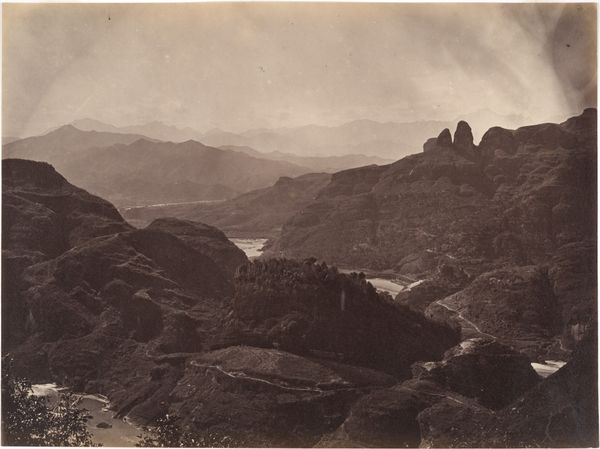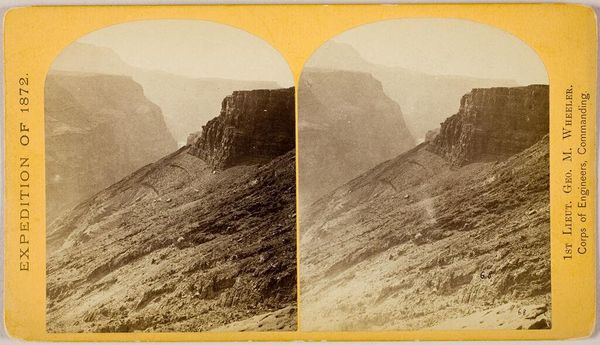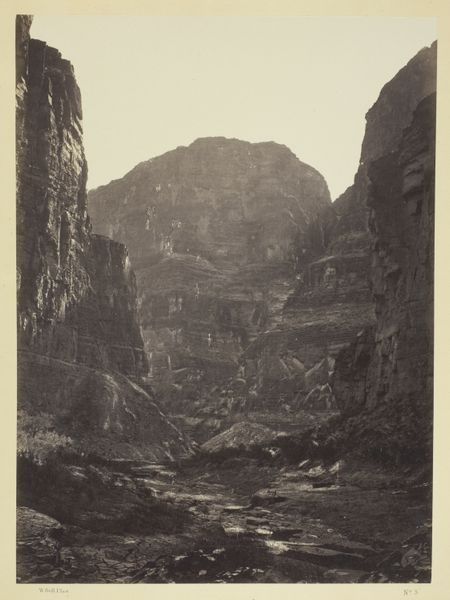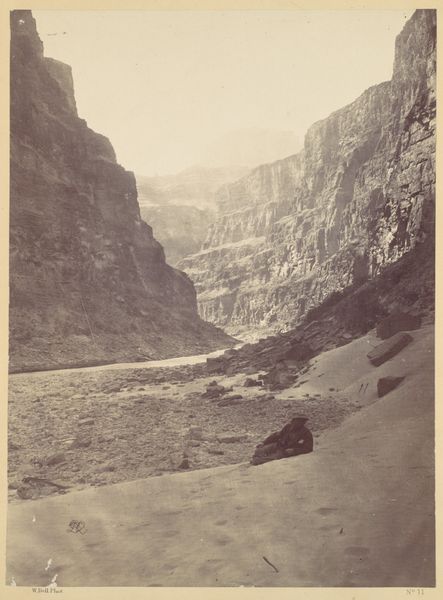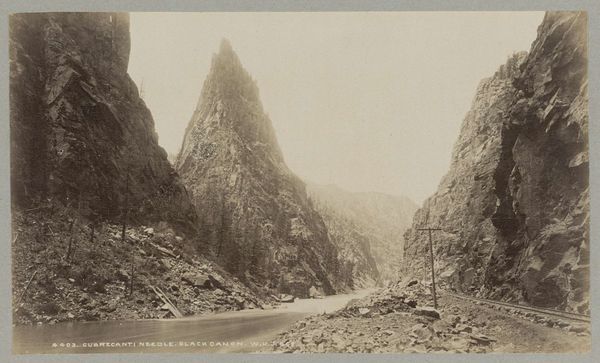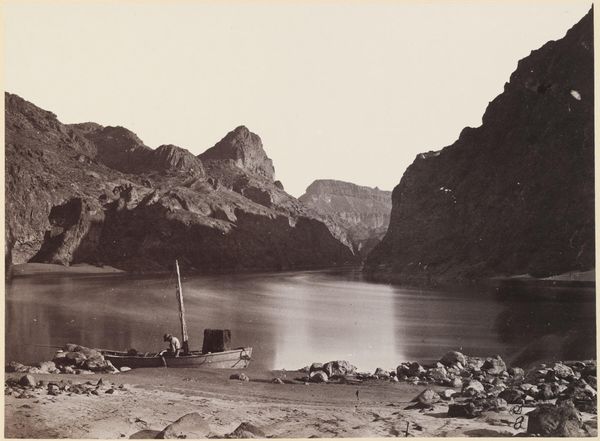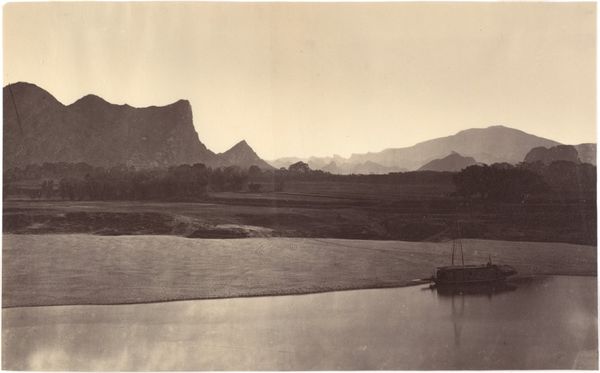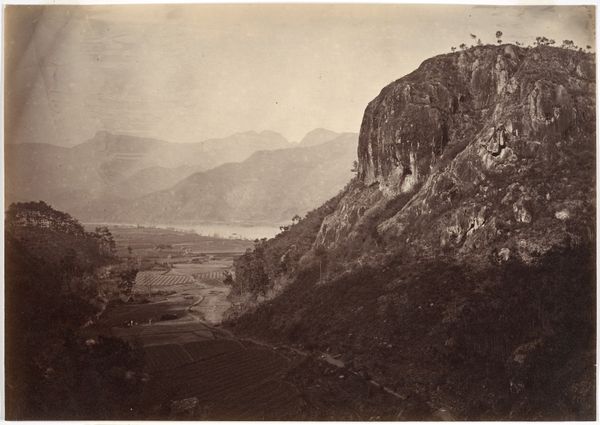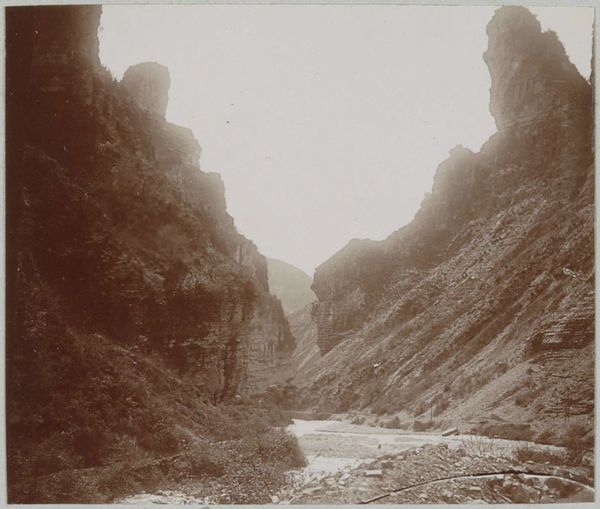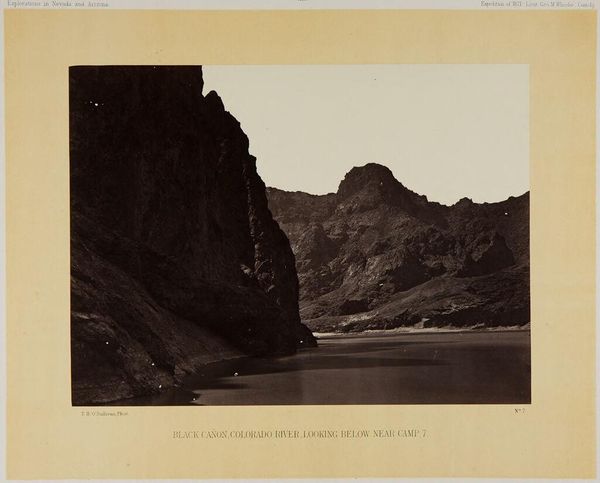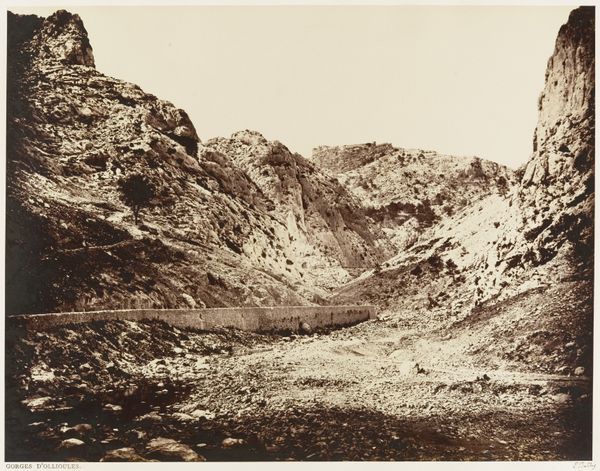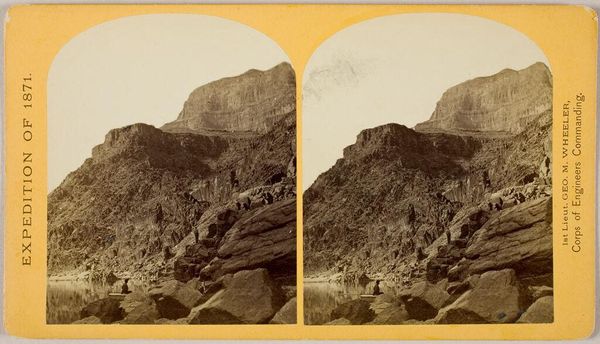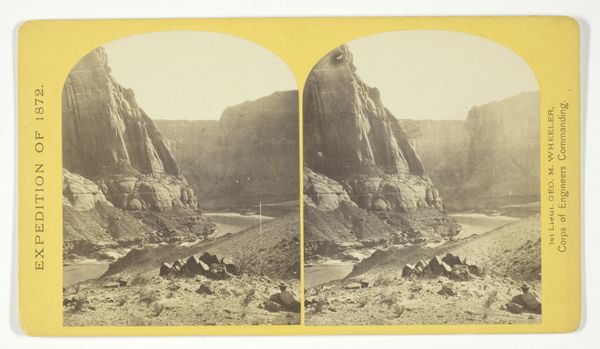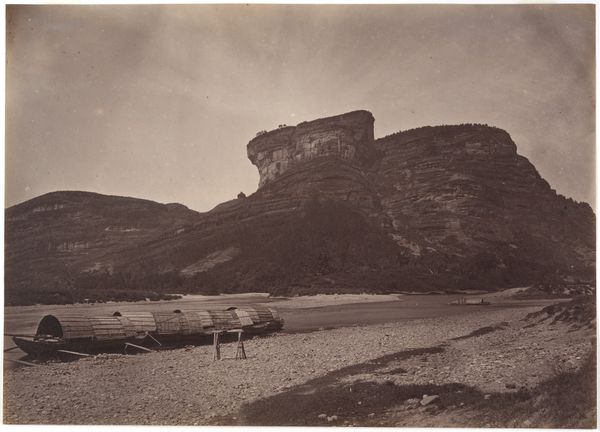
photography
#
nature photography
#
landscape
#
nature
#
outdoor photography
#
photography
#
outdoor scenery
#
mountain
Dimensions: Image: 8 1/8 × 11 5/16 in. (20.7 × 28.7 cm)
Copyright: Public Domain
Curator: This is Lai Fong’s 1869 photograph, "Piled Stone Mountain Near Sing Chang," now part of the Metropolitan Museum of Art’s collection. The composition is quite striking, capturing the grandeur of the Chinese landscape. Editor: The tonality! The monochromatic scale feels so old, even ghostly. There’s a palpable sense of age, as if I’m looking at something immutable and timeless, especially with the striking stone formation dominating the background. Curator: It certainly speaks to the enduring power of nature. What do you make of that 'piled stone mountain', so to speak? It’s visually quite interesting with this particular formation. Editor: The cluster of what look like megaliths feels strangely like a cathedral, or perhaps, even, a kind of prehistoric dolmen marking some unknown ritualistic or funerary site. Is it truly natural? I find myself wanting to read a coded cultural memory into that pile, as if humankind attempted to touch the sky, stone by stone. Curator: Fong, as a photographer, was definitely playing with perception. Consider how he frames the rock formations—placing the camera at a relatively low vantage point exaggerates their scale and emphasizes the rugged terrain. It's fascinating to observe the Western gaze upon the landscape of 19th-century China, one carefully crafted through photographic means. Editor: Absolutely, that compositional decision shapes our understanding! It's impossible not to think of other similar visual documents capturing sites of colonial encounter or interest, where photographic technology was used to solidify particular ways of seeing, of possessing, the land and its peoples. But that brings an essential question forward – to whom was this grandeur meant to be expressed, to who’s power does it appeal to? Curator: Perhaps Lai Fong was thinking about imbuing these landscapes with an undeniable sense of authority for international or domestic consumption. How else might photography like this cement ideas about the power of an empire in a modern age? Editor: Yes, and perhaps the choice of black and white is intentional, too – lending an air of timelessness, erasing signs of modernity to reinforce a connection to China’s ancient history, one carefully controlled and promoted. The stony monochrome almost creates its own symbolic order, one of deep time and unchanging tradition. Curator: A very interesting perspective, particularly noting how these staged portraits of the landscape worked politically and visually. Considering the way Lai Fong composed this, there is much food for thought, especially as we engage in conversations about visual memory and cultural projection through landscapes. Editor: Indeed. It’s more than just scenery. It is about carefully framing stories of land and its history through very distinct worldviews.
Comments
No comments
Be the first to comment and join the conversation on the ultimate creative platform.
